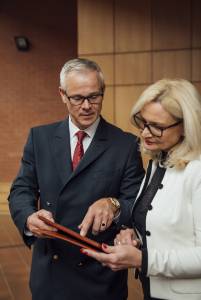Way of Working
OPERATION INTERNATIONALIZATION
Always when the Management Consultant is in house, new projects are to be expected. Mine meant: Optimization of the global supplier structure. Which resulted in the systematization and reduction of the suppliers working for us worldwide. I became the Project Manager of a global project team with 10 employees from all over the world. "One for all"! was announced.
1. Gain trust:
In order not to fail from the outset due to the resistance of the local affiliates, I gained the support of the local management of the affiliates in the countries after initiated a lot of concersations and presentations.
2. Get everyone on board:
Each local affiliate appointed a representative for my core team.
3. Inventory:
Each local affiliate supplied its specific shopping list (spend map) with suppliers, expenditure categories, products, services, quantities and sales.
4. Unification:
From this mixture of information extracted from various different systems I distilled a uniform table into which the national companies could transfer their data. Since this was associated with additional workload and tight deadlines, resistance had to be overcome and manpower added.
5. Selection:
Each country organization had to choose 2 to 4 exclusive suppliers for each product or expenditure category. The rest fell under the table. After many discussions and hard work of persuasion, the number of suppliers was reduced by 50% after the second run. Mutually.
6. New rules of the game:
Only the selected suppliers were loaded into the system and could be called up. Newly admitted suppliers had to go through an approval process. Orders outside the system were subjected to increased control. The new rules were informed and sworn in.
7. Result:
Reduction of suppliers by 60%. Standardization of purchasing policy in a uniform purchasing system worldwide. Transfer of responsibility to the management of the country organization with the support of the global purchasing organization.
CHANGE MANAGEMENT
When a company mutates from a multi-divisional all-rounder to a specialist through company sales, it's time to put internal business processes to the test. I did this in my responsibility for the supply chain with the functions of purchasing, production, quality control and procurement logistics.
An organization has always grown historically. This brings with it a certain resistance to change. Nobody wants to say goodbye to familiar processes, even if the company structure has changed completely.
If the restructuring is to succeed, you have to start where the suffering is immediately felt: everyday problems and difficulties in production.
First of all, I consistently set up a weekly jour fixe with all managers and systematically worked through an agenda of practical problems. The proposals for solutions were worked out and decided in a team by the team, implemented on site and the results continuously reported. The benefit: everyone was helped.
This was the breakout from the isolationist silo mentality and the nucleus for common thinking in networks. Next, I directly involved the operators in the negotiations and audits at the supplier and involved in the selection of new suppliers. This created the basis for eliminating interface problems along the value chain. The benefit: smooth processes and upgrading of the operators. It also opened the horizon for strategic make-or-buy and outsourcing decisions that would previously have failed due to a lack of mutual understanding.
The reward of the activity: An open, cross-interface supplier, networked communication culture with unimaginably adaptable mobility. In a word: future-proof
Or in numbers: Realized savings of approx. 5% or approx. 1.3 million euros in the first year, approx. 3% in each of the following two years.
TARGET COSTING
Target costing is the shopping crowbar whenever new markets have to be opened up. If the growth in the classic sales markets has ended or is declining, the question arises: How do you open up new markets?
With our "old" products, this was only possible by attractive prices, because there was no innovation potential.
The priority was therefore to reduce the procurement cost for key raw materials, preferably in the double-digit range, and permanently if you followed the requirements of marketing.
Of course, you first ask the regular suppliers and leave a personal target price. However, it is seldom the case because the suppliers generally insist on their cost and calculation basis and are rarely inclined to offer full cost coverage.
What to do? You look around in the world. So I found what I was looking for in China, but it was a manufacturer that has so far been able to produce only a fraction of our annual requirements.
A lengthy process then followed to support the manufacturer in gradually increasing production capacities and production quantities, to examine and adjust the required product quality with the help of samples and testing processes, to ensure the continuity of quality by defining production and testing processes, the ability to deliver and adherence to delivery dates to ensure by jointly securing the raw material supply in the country, to bring the transport packaging and transport conditions to the required level and to test the entire supply chain.
After audits, implementation of quality and EHS measures, as well as training, a smooth SCM process could be set up to meet all requirements.
Conclusion: The procurement costs for the two key raw materials could be reduced by 25% respectively 40% below the re-negotiated prices with the old suppliers and marketing was able to achieve its target prices.
The savings amounted to several million euros.

